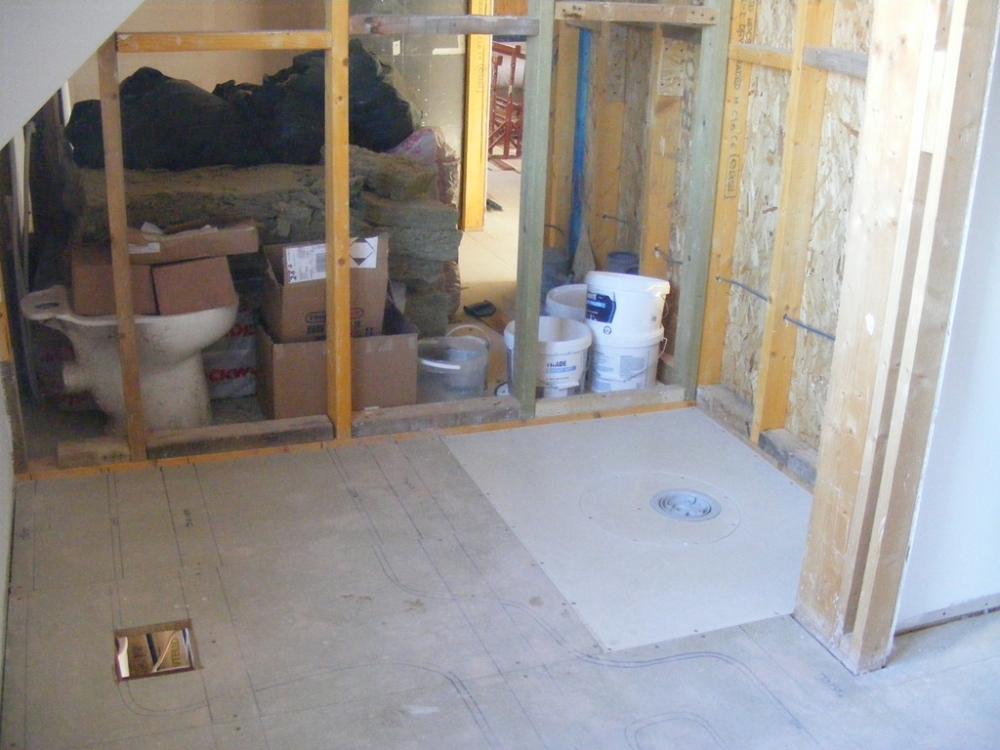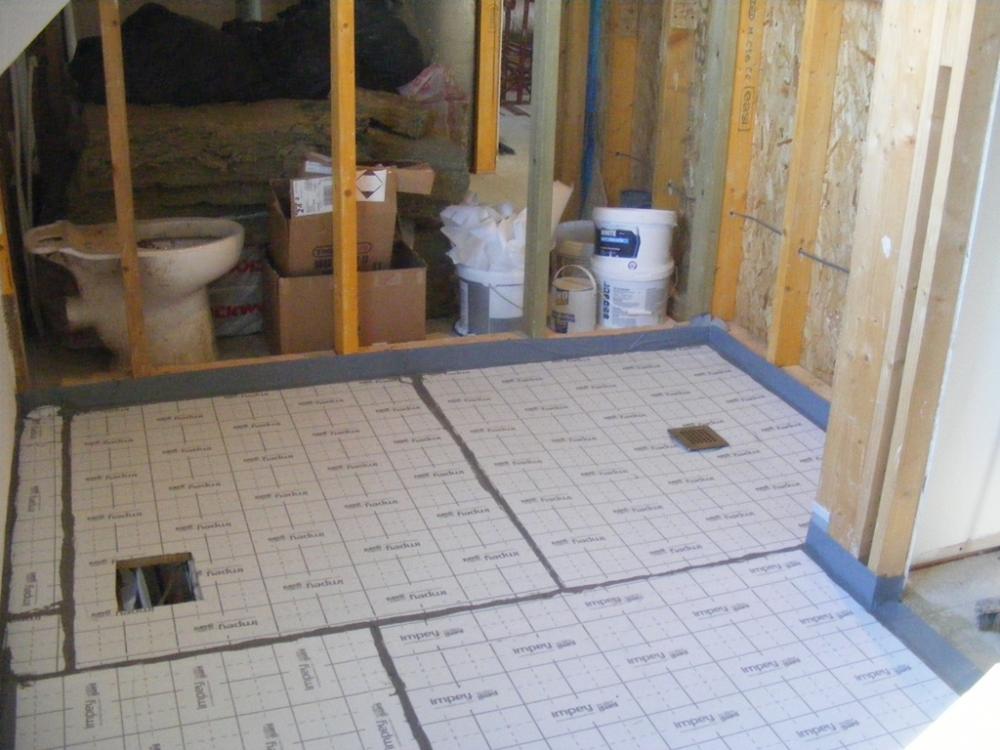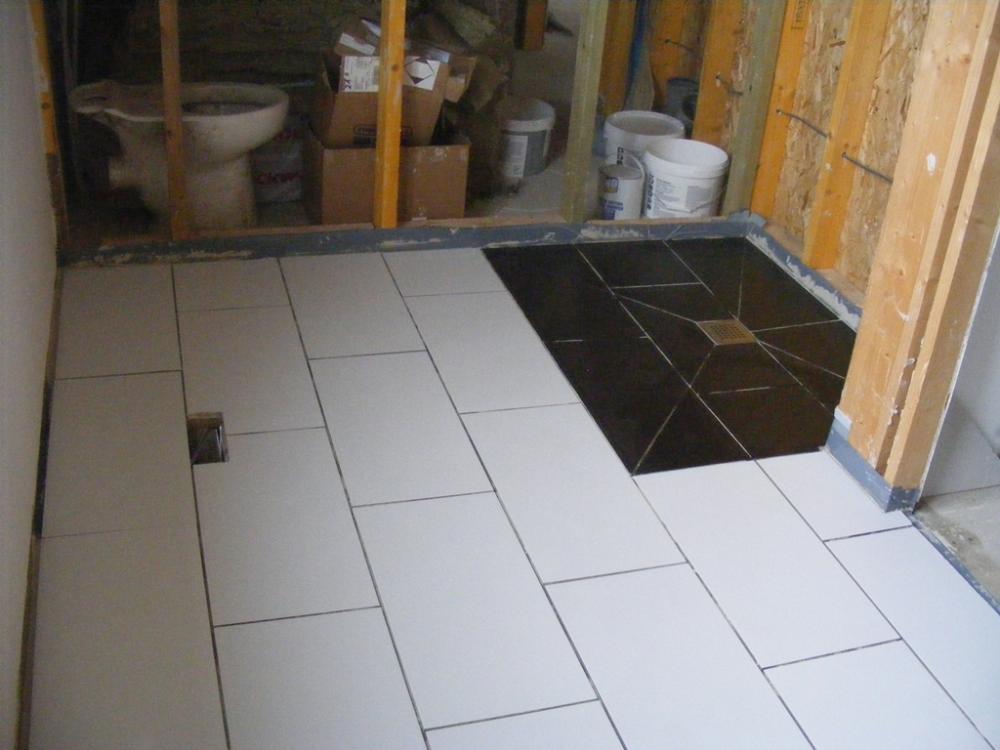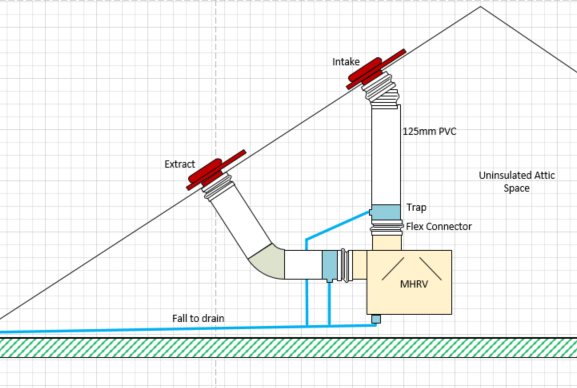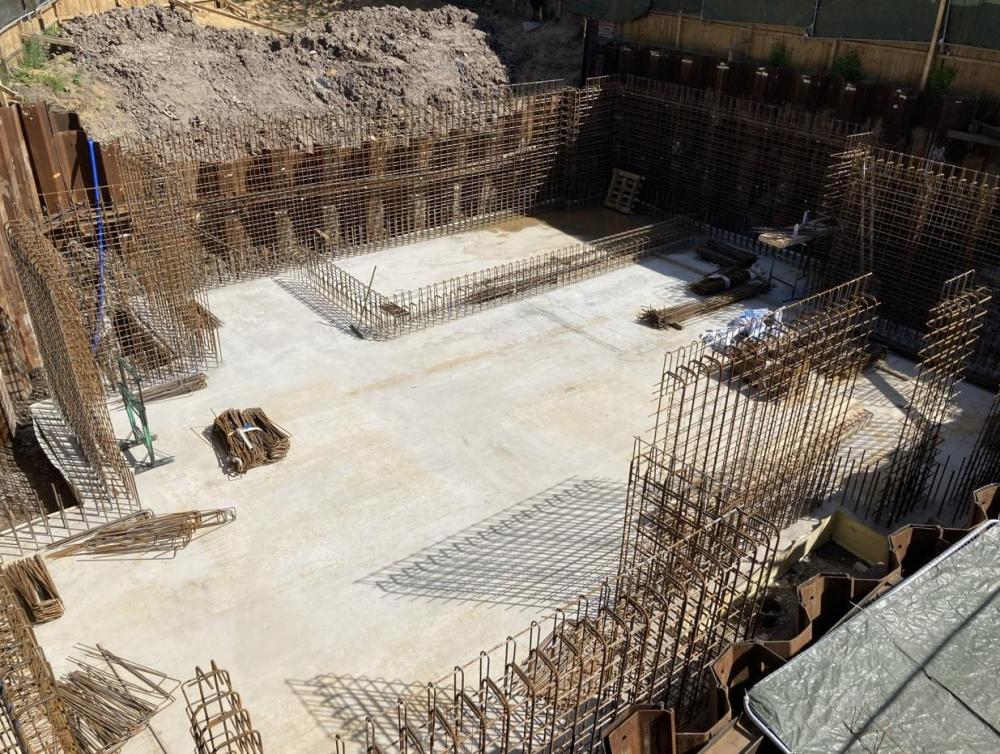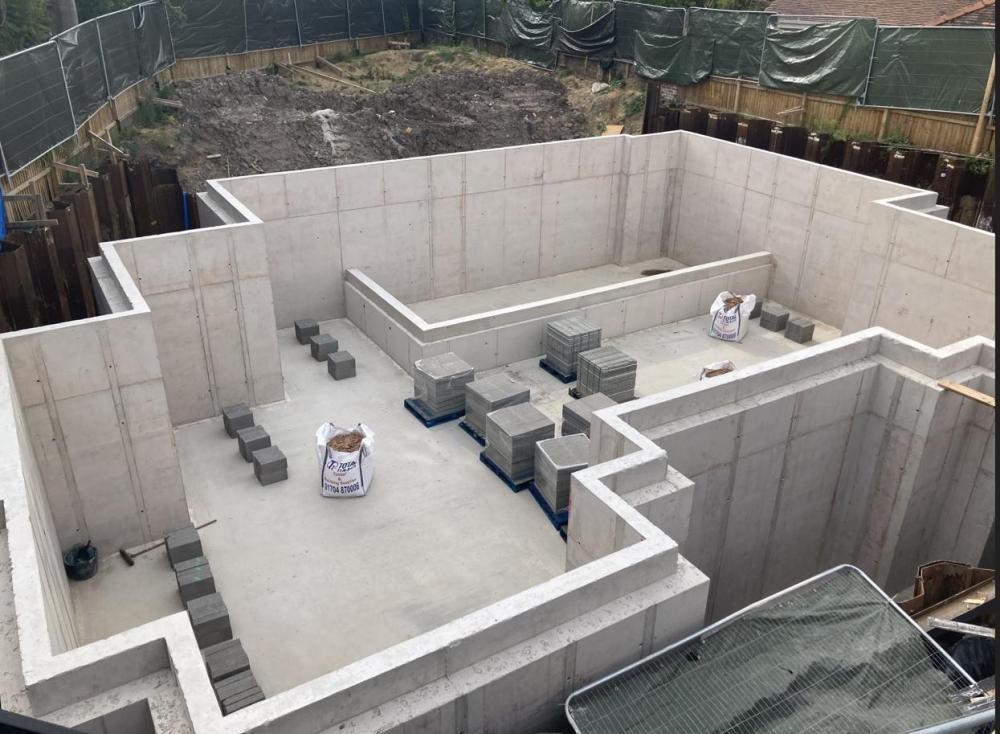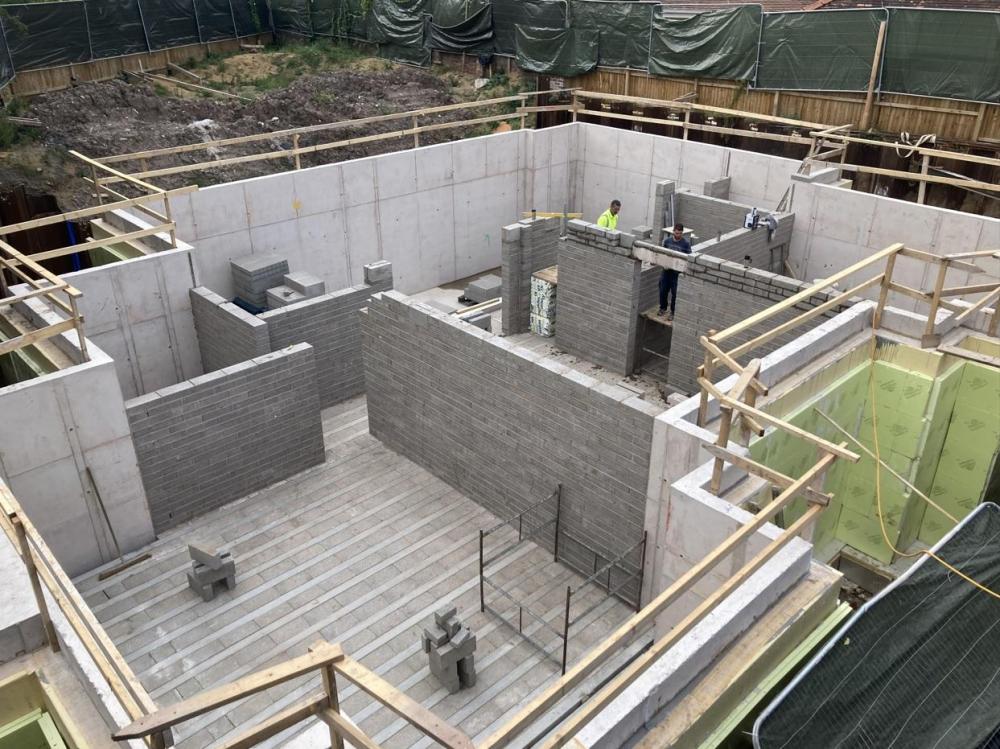Leaderboard
Popular Content
Showing content with the highest reputation on 09/28/22 in all areas
-
I chose felt and bitumen after talking through the various options with Bauder. My impression was felt and bitumen was a good solution if you have lots of fiddly bits on the roof. And I had 9x rooflight up-stands to detail in my flat roof. In my case, I was reassured by the independent (and unannounced, even to me) inspections of the installer's work by the manufacturer. Whatever system you go for, make sure you get a 20+ year transferrable guarantee from the manufacturer, not just the here-today-gone-tomorrow installer.4 points
-
***Update*** Our Surface Water Planning Condition has just been discharged! We're over the moon, now we can crack on. 👍4 points
-
Also worth noting the Impey Waterguard membrane is also a decoupling membrane so you can just tile onto it.2 points
-
I agree and although I prefer GRP it still has to laid properly hence my opinion earlier about a company that specialises in GRP.2 points
-
Short version: I think the choice of roof covering is probably a lot less important than the choice of roof installer. We went with Resitrix, which is a textured, reinforced EPDM layer over modified bitumen. As documented here more than once, the product is great. It's been up there over 7 years, and is still looking bombproof. The problem was that the product wasn't installed all that well. I'd raised questions about the quality of a number of the joint when it was first finished, especially around some of the outlets. I wasn't happy with the answers they gave, so I got the local rep out to inspect. He sent me an email confirming that the installation was of the high quality expected from their authorised installers. A few months later, we woke up the morning after a large downpour to water dripping around the downlights in our bedroom and the main bathroom. Two of the joined areas I'd expressed concerns about turned out to be even worse than I'd thought might be the case. The installers came out to rectify. I made them re-do the other similar joins: upon removing the original joins to replace, it appeared that another two had almost completely given way and would be be leaking in the very near future. I was up on the roof again just last weekend patching some joins that I wasn't happy with: Resitrix is clearly an amazing product, but the installation - both the details chosen, and then the way they were implemented by the installer - completely let the product down. Also, double-check what the guarantee covers. We have a transferable, insurance-backed guarantee, but it only covers materials. I don't know whether that's typical, but if so, it's of limited use.2 points
-
2 points
-
Like so many aspects of house building, there is no right answer. I read most of the threads here on the topic and was not able to draw any firm conclusions. We went with the Sika Trocal single ply product. https://gbr.sika-trocal.sika.com I did the plywood deck, which I feel is where most of the cost is. A Sika approved specialist installer took one day to install the covering. I will upload some photos later. Of course this roof covering has only been on since March, so I have no idea about the longevity of this solution.2 points
-
Depends on the roof size. It also needs to be properly designed and structured. If there is any steps or other stress points in the design then they need to be built in to allow any differential movement. There are some out there that think that the use of EPDM allows a roof to move and stretch more than any other product which is untrue - it will stretch to a point but when properly bonded down it can tear. A proper 2 layer GRP (ie 2 layers of 450gsm CSM) will bond to the underlying OSB and become a single structural membrane - it will move with the structure but remember that most movement will be downward compression/ settlement on a TF so it will all move together.2 points
-
I’m doing the same, fibre reinforced ecFlow concrete, a little more per m3 but I saved £1k on rebar mesh, plus the time and hassle of fitting it. http://www.easternconcrete.co.uk/wp-content/uploads/2018/07/GDA-443_EcFlow-Nov2017.pdf1 point
-
1 point
-
Open Reach free issued a coil of steel wire armoured 6 pair phone cable and a length of grey Duct 52 for the purpose. Only the section under the road crossing was under the duct, the rest was direct burried. Some areas don't use the SWA cable and use a soft cable and duct the whole lot.1 point
-
Build it as a permitted development building after completion.1 point
-
1 point
-
You split the title as you remortgage. You are long way off this part of the process as you havent got planning yet.1 point
-
HMRC see it like this... Fitting is labor which must be zero rated to you. If you purchase worktop from B&Q it would be standard rated to you but you can reclaim it after completion. Mixed labor and materials (eg supply and fit) should all be charged to you at the same lowest rate. In this case that woukd be the zero rate for labour. So in short, it should all be zero rated to you. If you are given a quote for £xyz plus or Inc VAT its best to get it amended before you accept it.1 point
-
never seen it used for that but it’s HT process pipe insulation by the look of it - at £30 a length though, vermiculite is cheaper by a long way !!!1 point
-
He he he, loved the video of the suspended digger Batibouw Trade show in Brussels sounds good. Alan1 point
-
How much is too dear for your access point? You can buy them cheap enough but cheap is relative. It’s also worth thinking about security and privacy. You as the subscriber are on the hook for any illegal activity your internet connection is used for. There have been cases where the subscriber has been fined. Therefore, I would definitely set a password as a minimum. But you might want to consider some disclaimers your guests need to sign etc. there are bound to be templates you can use.1 point
-
^ I've two old routers hung off our Huawei 4g one, a Talktalk and a Draytek. All three are playing nicely with each other.1 point
-
Amazing! So no mitigation? Congratulations!1 point
-
When I set up wifi in the static caravan, with the phone connection in the house, I used an old BT Home hub 3 router which I had spare. Turn off all the DHCP functions etc and it just connected to the ethernet. If you don't have one, you can possibly get one on freecycle or not a lot on ebay.1 point
-
Why not just build with 140mm blocks..? Quick and easy and tbh they are nicer than hollows and you don’t lose the internal space of a 9” block1 point
-
We've done exactly that with no noticeable issues. Exhaust is on the south side of the roof, and intake on the north pitch.1 point
-
its what we did, we split the title of the existing house to create to separate plots of land. We re-mortgaged on the now reduced plot of land of the existing house to release funds to build. Also you have the option available to get a self build mortgage on the plot of land you have a separate title for. Have you got planning permission yet as this will be your first hurdle before the finance side.1 point
-
my observation would be that the warm moist air leaving the house is condensing within the extract ducting. The water trickles back towards to MVHR unit, wetting the filters and other components. I am about to install mine in a un-insulated attic. this will increase the risk of the above happening for me too. I intend to mitigate the risk by : a using solid plastic, insulated ducting for Ingress/Egress vents. Insulate pipes, connectors etc. Fitting a in-line duct condensation trap on each Ingress/Egress ducts close to the unit Where possible allow a gentle fall away from the unit for the exhaust duct/vent draft plan below, welcome observations1 point
-
I would specify 3 layers. May seem more than needed, but I still see external cladding I made over 40 years ago in service. The main reason for the extra lay is to allow for overlaps and more resin overall. You also get more material to play with if you need to do some extra sanding or trimming.1 point
-
If you do go with GRP use a roofer that specialises in that material1 point
-
Why not just remortgage the current house and release the funds based on affordability, then do the mortgage switch / move when you finish the new build ..? You'll need to tell them (Santander) at some point that you’ve annexed off part of the garden as it could affect the value and the LTV but I expect their bigger issue will be affordability on the extended loan facility first.1 point
-
I can second this as mine is the same. The only issue I ever get is when its been quite cold for a few days, and the outside air temp rises, the garage/workshop remains colder, a dry cold, you then open a door and a rush of warmer damp air enters the garage, I then sometimes get condensation on big metal objects, the Land Rover 90 being one of them and my tool safe, however, this phenomenon only ever happens about 6-8 times a year and can be limited by entering the garage and shutting the door. I had considered forced ventilation on a humidity stat but I also then decided that warm humid air was the last thing I wanted coming in!1 point
-
I agree, I have done quite a few GRP roofs and really like the method and product but it must be done in very dry conditions and accurately with the mix, not something you can bodge (and get away with). Look in any harbour and you will see very many old fibreglass boats still floating 🤔🤷♂️.1 point
-
I don't think now is a good time to be asking lenders for a loan. They are running to the hills ATM.1 point
-
No. Just happened to ask 3 roofers that had never attempted, or had attempted but failed, a GRP roof for an uneducated opinion. To do GRP properly you ned to get someone that knows what they are doing, you don't get your kitchen fitter to pour your foundation.1 point
-
doesn't the structure underneath make a difference? I was told by 3 different roofers that due to the timber frame building and potential movement GRP wasn't suitable and all recommended a single-ply membrane. not sure on the validity of the claims but if 3 of them independently said it it must hold some truth, no?1 point
-
As above But just to add that many suppliers either won’t or don’t want to zero rate Giving you two choices Our quarts worktop supplier wouldn’t zero rate So we paid it and claimed it back a few months later They gave me some nonsense about me having fitted the kitchen They are probably the largest granite worktop supplier in the uk But They price was right and they had the colour we wanted1 point
-
Hi Jilly. My own thoughts are: Have a Firestone rubber roof on part of my own house, from memory it was the thickest they offered 1.5mm thick. Performing well so far. Also, as I did it myself know how to fix it if hit by astoroid. Fibreglass, yes does well, but less easy maybe for DIY / local builder to maintain? Also edge detailing and you need the weather to be ameniable as the resin cures If you want have a look at Sika Sarnafil, you get an approved installer to install, bit more expensive but is a well tried and tested system. Felt and bitumen.. used to do this but the weak points can be the seems / joints. For me I would go for a more modern system even though old sckool at times myself.1 point
-
Hiya. Sorry to hear about your experience. Good news is you have caught it early before anyone got hurt. Hope this helps and for all. When you design glass ballustrades the following steps are roughly this: 1/ You get the Clients spec. Say height, configuration and if it is say domestic or industrial / public ( say a pub) loading. 2/ Obtain the manufactures' data sheet. This tells you how the glass will perform under load coupled with their track design. They are mostly tested as a unit / system 3/ Look very carefully at what they say the substraight is.. often they say "concrete non cracked ".. or "solid" etc... so could be steel. And this is where it all tends to go badly wrong, things become unsafe and the continuity and liability in the design breaks down. To get say a BBA, CE mark & comply with the standards the manufacturer bolts their glass and track to a very solid test bed in a lab and checks to see if it will carry the load (not fail) and not deflect too much also a failure.. the 25mm often mentioned. The fixings are bolted to the test bed and so long as the fixings don't fail when connected to the test bed all is good. If you read the manufacture's literature this is often where their liability ends. Some don't even specify the fixings! They just give you a hole diameter in the track (could be side or top mounted etc) and the grade of aluminium that the track is made from. I have seen this from a German manufacturer for example. If you are say an SE you then need to calculate the tensile and shear forces in the fixing based on the track dimensions. Check to see if the fixing will pull through the track, check the fixing for all the forces (tension and shear) and often the key is what the fixing goes into and if it can resist the forces. Then you as an SE need to check to see how much you substraight will bend (deflect) by as this is included in the 25mm deflection at the top! Now this is tricky but can be done. All BC sees is the total deflection.. there is only one cake to share deflection wise. In general laymans terms the fixing is subject to mostly tension (the levering effect from the glass), the shear forces (sideways forces) are relatively small. But imagine the glass is like a long pinch bar.. there is a rotational force at the level of the track, this generates a rotational force called a bending moment.. and brickwork is very unsuited to resist these type of forces unless it has a huge amount of dead weight above. In other words you can't put bending moments into the top of a brick wall and expect any good result. You can put bending forces into concrete if it is adequately reinforced or thick. Yes I think the manufacturer is likely in the clear... will be caveated in their spec. The installer should have known better so they are in the line of fire. In the round while I think you have a good case for a claim against the installer for negligance that resulted in damage to the wall. You may want to say.. look.. I'll keep the glass and track, may sell it on ebay and that will cover the damage to my wall due to your lack of experience / knowledge. OR you can sue me as I have not paid my invoice and see how that goes boys and girls. But before you do make sure you have got an SE on board that can justify why you installed a potentially dangerous system.. contrary to the manufacture's recommendations and if you have broken other regs such as CDM etc.. as we will need to have a look at that too! In the round, with a bit of careful thought you may break even cost wise.1 point
-
I was also a bit worried about this after reading reviews but found that compared to the deep fat fryer that had the extractor on full it’s no louder but initially as it lower down than extractor and closer to you it was noticeable. After using it a while now nearly a year I don’t notice it at all. Also unlike fat fryer I’m happy to leave it unattended and be in another room just as I would with the oven.1 point
-
If your build has not been signed off, then 0% is the correct rate. As soon as our supplier visited the house it was obvious it was a new build that was not yet finished and they did not contest it and zero rated the supply and fit. Show them a copy of the planning permission as a starting point if they contest it further.1 point
-
You could get some made in white I would have thought. Usually goes into the mortar joint. But can be stuck to a wall, and with the right preparation for the rendering system, rendered over.1 point
-
Sort of, Fabco made us a PAS24 compliant door out of steel and reeded glass which we installed as a front door, even though they said they had never done it as a front door. Beautiful door. Not cheap, but still cheaper than the likes of IQ glass.1 point
-
If it’s not seen and has no roof penetrations I’d go with edpm if you want it to look nice and have any complicated penetrations I’d go with grp1 point
-
Vote for Rubber for me I self-installed an L-shaped flat roof 20 years ago on my previous house (still going strong). Recently, I've installed rubber onto two outside buildings It's cheap, completely waterproof and easy to install, my only real criticism is that the flashing and finishing accessories are expensive. Regards Tet1 point
-
1 point
-
Is a manufacture, but properly done GRP will outlive the building easily. How big is the area?1 point
-
Apparently it's only on areas directly accessed from the building. So not a treehouse, pergola, ornate fountain/pond, bandstand or shed in the middle of your garden. Just think of all the little landscaping walls and details with falls over 600mm. Country would end up being one big ballustrade.1 point
-
1 point
-
If you are buying new windows anyway, and extending the back, you have a good opportunity to make most of the house fairly airtight, as the main points of weakness are junctions with windows and doors. If you are replacing all windows, you can make sure those junctions are taped properly and that the windows don’t have any trickle vents. New rear extension suggests new rear door (sliders/bifold if/French doesn’t matter, so long as they are airtight). If you are asking EwI that will also improve air-tightness. So I would go for MVHR. You just need to make sure the front door is draught proof.1 point
-
i am installing a MHRV into a mid-terraced Victorian house. Over and above the running costs and effort, there are many counter benefits such as you have outlined.... - offsetting the sealing of openings (new windows/doors) - off-setting any airtightness measures added to rooms, floors etc. to ensure there is adequate fresh air ventilation. - allow for windows to remain shut - obvs. preheat incoming supply - reduce heat losses - expel humidity, mitigate damp, mould, condensation etc. - Improve air quality - increase comfort levels Controversially I am not even doing all rooms - just middle and top floors (4 bedrooms, 2 shower/WC rooms); this approach will further decrease the efficiency of the system. I would summarise as follows, I think it is worth it, as I want to reap some of the benefits above and I am limited in what I can do (listed building) and I acknowledge it is far from a model-installation. 'Routinely opening windows' is trite suggestion and not an option for a large house and/or modern family (2 working parents ) that are trying to reduce heat losses and improve comfort and I think a MHRV retro-fit addresses many issues. Best of luck with your installation if you proceed. PS - it helps to try and pick up a good condition 2nd hand unit, I did (Vent Axia sentinel kinetic FHL) and it completely enhances the justification and negates commercial downsides.1 point
-
Thanks all. I am the sole builder on my project (with occasional hired help) so I can chaperone the MVHR though any dusty phases. And turn it off. My main wish in having the MVHR operational during the winter is for its benefits in retaining heat. I don't currently have any space heating. The dwelling is very well insulated. For example the roof has 200mm of PIR above the deck and 100mm of woodfibre insulation between the posi-joists beneath. I am hopeful that I can sail through the winter with a toasty house and just a tiny bit of supplemental heating from a Dimplex. It will be a good experiment on how the house will perform even before I add yet more insulation to the walls with a layer of insulated plasterboard. For mounting the MVHR, I am currently debating whether to mount it to the wall or to the concrete floor (220mm concrete raft foundation on screw piles). The Brink installation manual says (my emphasis): "The Flair 325 … appliance can be mounted onto the wall with the supplied mounting bracket. For a vibration- free installation, the appliance must be mounted to a solid wall with a minimum mass of 200 kg/m2. A gypsum block or metal stud wall does not suffice! Additional measures such as double panelling or extra studs are required in that case. On request, a mounting support for floor mounting (with the same minimal mass) is available." It now strikes me that bolting the MVHR to the concrete floor, and so without it touching the wall, is probably the way to a vibration-free and quiet life. This is despite the adamant advice from a friend, who has installed quite a few Brink units, saying that wall-installation would be fine in my circumstances. Brink can supply a handsome floor stand but its only 400mm tall. And I was planning to install it at the height of a kitchen counter so that my water softener would fit beneath. So I found myself on Google looking at ways to build a sturdy stand. And stumbled across steel slotted-angle … and then UniStrut. UniStrut looks like it could support the Forth Bridge but it looks rather nicer than slotted angle. Both seem quite inexpensive but only available from online stockists, not from the usual local hardware shops. I am continuing to think. Insights would be most welcome.1 point
-
I get condensation dripping from my MVHR external extract vent for certain weather conditions. It is normal, which is why the ducting leading to the external extract vent should always be angled downwards slightly to allow the water to drain away.1 point
This leaderboard is set to London/GMT+01:00




.jpg.c21f3ac78c9b7efd90cbdcb312744dc5.thumb.jpg.7adcad4c0e384f5ecd7d56b0618df6e5.jpg)
